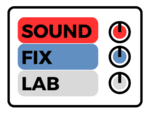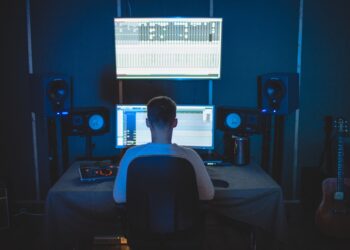Metering plays an important role in music production, enabling producers and engineers to measure and analyze audio signals accurately. By understanding different types of meters and their significance, you can make informed decisions during the mixing and mastering stages. In this tutorial, we will explore various metering types, their interpretations, and best practices for metering individual instruments, groups, and the master bus.
Types of Meters and Their Information
- Peak Metering: Peak meters display the highest instantaneous level of an audio signal. They provide real-time feedback on the peaks or transients, which are the short-lived, dynamic elements of sound. Peak meters are typically represented with vertical bars that light up when the signal exceeds a certain threshold. They are essential for preventing digital clipping and ensuring a healthy dynamic range.
- RMS Metering: Root Mean Square (RMS) meters measure the average energy level of an audio signal over time. They provide a more accurate representation of perceived loudness by analyzing the signal’s entire waveform. RMS meters are useful for balancing the overall loudness and dynamics of a mix, helping you achieve a well-balanced and cohesive sound.
- LUFS Metering: Loudness Units Relative to Full Scale (LUFS) meters measure perceived loudness levels according to standardized algorithms. LUFS meters are crucial for maintaining consistent loudness across different tracks or during the mastering process. They take into account the characteristics of human hearing and provide a more objective measurement of perceived loudness.
- Interpreting Meter Readings: When interpreting meter readings, it’s important to understand the context and purpose of your metering. Here are some best practices and rules of thumb for different stages of the production process:
Metering Individual Instruments, Groups and the Whole Mix
- Metering Individual Instruments: Use peak meters to ensure individual tracks do not exceed 0 dBFS (full scale) to prevent digital distortion. Utilize RMS meters to balance the relative loudness of each instrument, helping them sit well in the mix.
- Metering Groups: Use peak meters to identify any problematic peaks that may occur when multiple tracks are combined. Utilize RMS meters to ensure a balanced and consistent loudness within each group.
- Metering the Master Bus during Mix: Peak meters help identify any potential clipping or distortion issues in the overall mix. RMS meters assist in achieving a balanced mix with appropriate loudness and dynamics.
- Metering during Mastering: LUFS meters are invaluable for ensuring consistent loudness levels across tracks and conforming to modern streaming platforms’ loudness normalization standards.
Choosing the Right Metering Type
Deciding which metering type to use depends on your specific goals and the stage of the production process:
- Peak Metering: Use peak meters to monitor transient information, prevent clipping, and identify potential issues with dynamic range.
- RMS Metering: Use RMS meters to balance the overall loudness and dynamics of individual tracks, groups, and the mix.
- LUFS Metering: Use LUFS meters during mastering to achieve consistent loudness levels across tracks and conform to loudness normalization standards.
Metering is an essential tool in music production, providing valuable information about the dynamics, loudness, and overall balance of audio signals. By utilizing peak, RMS, and LUFS meters effectively, producers and engineers can make informed decisions to create professional and polished mixes. Remember to interpret meter readings in context and follow best practices at each stage of the production process, from individual instrument metering to mastering.





